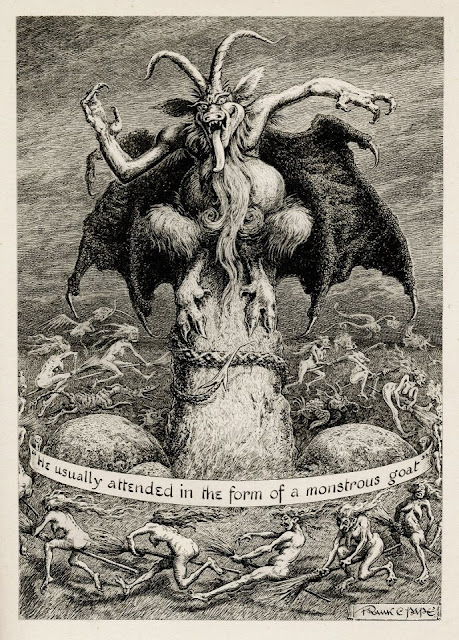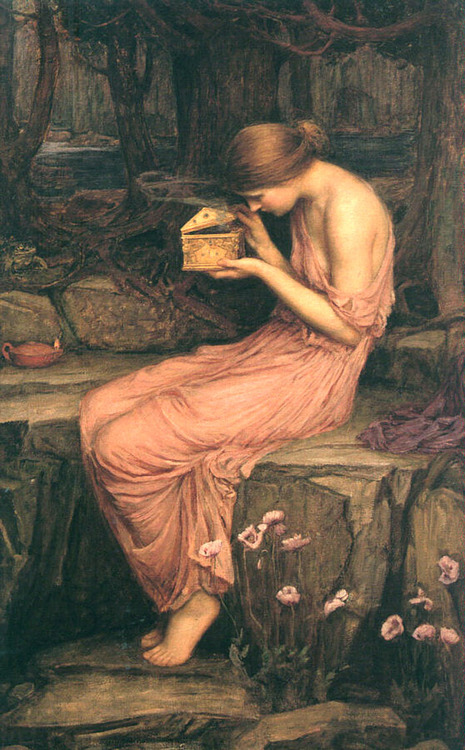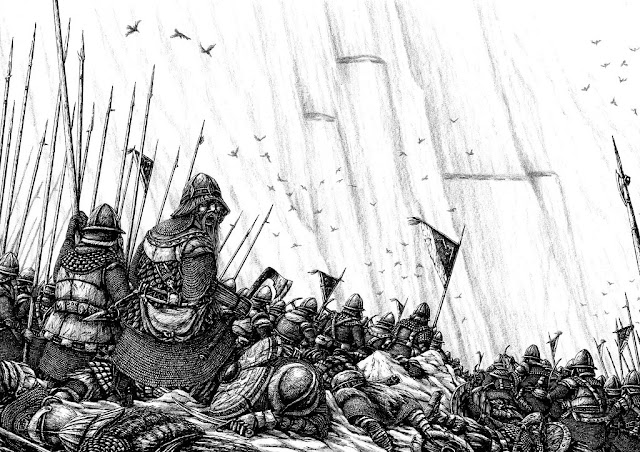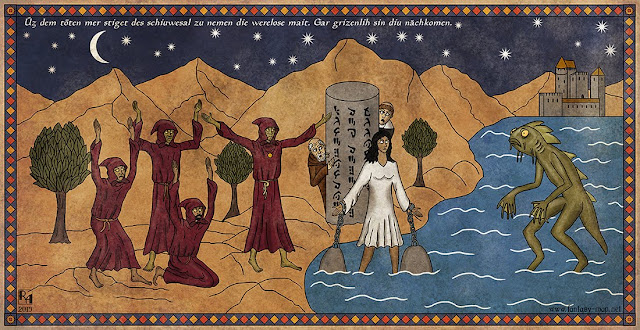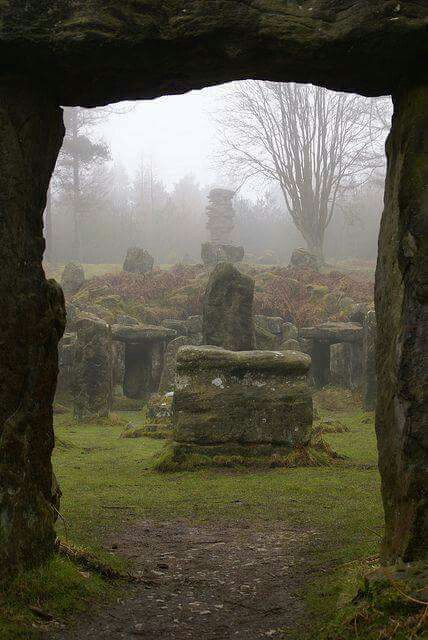
Not a blog, but I stumbled on this dude's writings quite a while ago. I like seeing all these articles in a wiki, there is just enough of the author's voice that you can tell they were all written by the same person, but the personality doesn't quite come through like it would on a regularly updated blog. It's like getting that transmission from another planet in Contact. Makes me wonder what life is like way over there.
Now this guy is trying mightily to do the impossible: make sense of Rules-As-Written D&D. This is essentially a fool's errand, for reasons I have only slightly grazed by in the past (the post about paladins for example): so much of what's in a core D&D book implies, or even demands, a certain setting. (For this reason I almost categorically refuse to discuss RAW in isolation, outside of the strictures of a specific person's game or campaign.) But people don't ALWAYS understand that. The value of a gold piece, the relative frequency of a monster on your random tables, or that stupid druid hierarchy from 2nd edition can have wide-ranging implications on how the game should work, and what the setting should look like, if you would but consider them!!
Of course what inevitably happens is people come up with their own campaign settings and then some of these basic RAW elements clash horribly with what the poor DM is trying to do. This seems to account for a lot of "D&D is stupid!", "D&D is outdated nonsense!" and other complaints that float past every once in a while, because not everyone is willing or able or even has the time to rework every aspect of the rules that may or may not align with their setting. Life is tough!
Obviously the OSR as a whole spends a lot more time than some other folks thinking about this very problem. But what makes this guy cool is that he is doing this for 3.x D&D, which is maybe the 2nd most-hated system around here, after 4th edition. Tons of rules and details, really technical combat, and an extremely standardized system. Now of course, included in these sourcebooks are extra 3.x classes, and feats *shudder*, but watch what else he does with it. Rather un-dogmatically attempting to point out places the rules fall flat, and offering some choices for possible changes:
Tome of Necromancy - Rectifying what negative energy is and does, rules for undead subtypes, better necromancer classes, morality of undead. Pretty interesting, I'd say OSR usefulness 7/10 for moral clarification and more jazz for the bad guys. Plus and everyone likes the undead.
Tome of Fiends - Adventures in the lower planes, morality on the planes, how to do it at low levels, etc. Like an alternate vision of Planescape. OSR usefulness 6/10, seems like most folks stick to low-level "scrub" adventures and planar detours to Carcosa instead of the Abyss.
Races of War - Some stuff to expand 3.x combat (like we need any more of THAT shit), better rules for monstrous PCs (definite improvement), demographics, how warfare would work when you can cast fireball. OSR usefulness 7/10 for ideas on how every humanoid race conducts its warfare.
Book of Gears - Revised magic items, crafting & magic item creation, more stuff on xp and wealth accumulation (watch him try to square the circle of experience points and wealth-by-level in 3rd edition. Lucky for us we know about xp for gold, ha ha ha!), traps, some other stuff. OSR usefulness maybe 5/10 for the further stuff about the economy.
Dungeonomicon - Although it overlaps a lot with things the OSR already deals with a lot (dungeon ecology or lack thereof for example), and takes a very naturalistic approach to everything, it also has the least rules and the most incisive thinking. Pay keen attention to the part about dragon hoards to see how 3.x treasure rules fall flat on their face, and make sure your game doesn't do it (TLDR; In 3rd edition, Smaug's hoard would be about the size of my mattress). OSR usefulness 11/10 for "The Turnip Economy," why you'd build a dungeon in the first place, and the societal dynamics of goblin
raids.
OKAY:
One of the best links on those pages seems to be broken. So reproduced in its entirety is my favourite article from these pages, which I saved on my computer because I like it so much. In case it wasn't clear, I DIDN'T WRITE THIS, I JUST LIKE IT A HECK OF A LOT and want people to read it.
Here we go with:
"The Three (or so) Economies
“I’ll
give you five pounds of gold, the soul of Karlack the Dread King,
and three onions for your boat, the Sword of the Setting Sun, and
that cabbage. . . ”
Life
in D&D land is not like life in a capitalist meritocracy with
expense accounts and credit cards. There is no unified monetary
system and there are no marked prices. All transactions are
essentially barter, and you can only trade things for goods and
services if people genuinely believe that the things you are trading
have intrinsic value and the people you are trading to actually want
those specific things. Gold can be traded to people only because
people in the world genuinely think that gold is intrinsically
valuable and that they want to own piles of gold.
That
means that in places where people don’t want gold – such as the
halfling farming collective of Feddledown, you can’t buy anything
with it. It’s just a heavy, soft metal. But for most people in the
fantasy universe, gold has a certain mystique that causes people to
want it. That means that they’ll trade things they don’t need for
gold. But no matter what they are giving up they aren’t ”selling”
things because money as we understand the concept doesn’t really
exist. They are trading some goods or services directly for a
physical object – an actual lump of gold. Not a unit of value
equivalency, not a promise of future gold, not a state guaranty of an
amount of labor and productive work – but an actual physical object
that is being literally traded. And yeah, that’s totally
inefficient, but that’s what you get when John Locke hasn’t been
born yet, let alone modern economic theorists like Adam Smith, Karl
Marx, or Benito Mussolini. If you really want to get into the
progressive economic theories that people are throwing around with a
straight face, go ahead and check out theoreticians like Martin
Luther, Thomas Aquinas, Sir Thomas Moore, or Zheng He. If you want to
see what conservative opinions look like in D&D land, go ahead
and read up on your Draconis, Li Ssu, Aristotle, or Tamerlain.
The
Turnip Economy
“We
got rats! Rats on sticks!”
Most
settlements in a D&D setting are really small and completely
unable to sustain any barter for such frivolities as gold or magical
goods. The blacksmith of a hamlet does not trade his wares for
silver, he trades them for food. He does this because the people
around him are farmers and they don’t make enough surplus to hoard
valuable metals. So if he took gold for his services, he would get
something he couldn’t spend, and then he wouldn’t be able to eat.
So even though people in the tiny villages you fly over when you get
your first gryphon will freely acknowledge that your handful of
silver is worth very much more than their radishes, or their tin
cups, or whatever it is that they produce for the market, they still
won’t trade for your metal because they know that by doing so they
run the risk of starving to death as rich men.
The
economy of your average gnomish village is so depressed by modern
standards that even the idea of wealth accumulation and currency is
incomprehensible. But the idea of slacking off is universal. There is
a static amount of work that needs to be done on the farm each year
and the peasants are perfectly willing to put you up if you do some
of their chores. Seriously, they won’t let you stay in their house
for a copper pfennig or a silver ducat, but they will give you food
and shelter if you cleanout the pig trough. They have no use for your
”money”, but they do need the poop out of the pig pen and they
don’t want to do it. On the other hand, they also don’t want to
be eaten by a manticore, so if you publicly slay one that has been
terrorizing the village the people will feed you for free pretty much
as long as you live. That’s why people pay money to bards. Bards
spend a lot of time in cities and actually will take payment in
copper and gold. And if they sing songs about you, your fame
increases. And fame really is something that you can use to buy
yourself food and shelter from people in the turnip economy.
”Costs”
in the turnip economy are extremely variable. In lean times, the
buying power of a carrot is relatively high and in fat times the
buying power of a cabbage is very low. It is in this way that the
people in tiny hamlets get so very screwed. No matter how much they
produce or don’t produce, they are pretty much going to get just
enough nails and ladders and such to continue the operations of their
farms. However, such as there is a unit of currency in the barter
economy of the turnip exchange – it’s a unit of 1000 Calories.
That’s enough food to keep one peasant alive for one day. It’s
not enough to feed them well, and it’s not enough to make them grow
big and strong, but it’s enough so that they don’t actually die
(for reference, a specialist eats 2000 Calories a day to stay sharp
and an actual adventurer eats 5000 Calories a day to maintain fighting
shape).
In
Rokugan, that’s called a Koku, and in much of Faerun it is called a
”ration”. It works out to about 2 cups of dry rice (435 mL), or a
12 oz. steak (340 g), or 5 cups of black beans (1.133 kg), or 4.4
ounces of cooking oil (125 g).
Higher
Calorie foods like meat and oil are more valuable and lower calorie
foods like celery or spinach are less valuable because a lot of
people exist on the razor’s edge of starvation. The really fatty
cuts of meat are the most valuable of all (it’s like you’re in
Japan or Africa in that way). The practical effect of all of this is
that people who have a skilled position such as blacksmith or scribe
get enough food to grow up big, healthy, and intelligent. The
peasants actually are weak and stupid because they only get 1000
Calories a day – they won’t die on that but they don’t grow as
people. This also means that the blacksmith’s son becomes the next
blacksmith – he’s the guy in the village who gets enough food to
get the muscles you need to actually be a blacksmith.
When
you start a party of adventurers, note the really tremendous
expenditures that were required to make your characters. A 16 year
old first level character didn’t just get a longsword from
somewhere, he’s also been fed a non-starvation diet for 5844 days.
That means that at some point your newly trained Fighter or Rogue
seriously had someone invest thousands of Koku into him to allow him
to get to that point. If your character is a street rat or a war
orphan, consider where this food may have come from. Perhaps when the
orcs destroyed your village leaving your character alone in the world
the granary survived and your character had a huge supply of millet
to sustain himself until he could hunt and kill deer to augment his
diet.
A
Note on Peasant Uprisings
Peasants
may seem like they get a crap deal out of life. That’s because they
do. And regardless of whatever happy peasant propaganda you may have
seen, peasants aren’t really happy with their life even under Good
or Lawful rulership. That’s because they work hard hours all year
and get nothing to show for it. So the fact that they don’t get
beaten by Good regimes or stolen from by Lawful regimes doesn’t
really make them particularly rich or pleased.
In
Earth’s history, peasant uprisings happened about every other
generation in every single county from Europe all the way to China
all the way through the entire feudal era (all 1500 years of it). It
is not unreasonable to expect that feudal regions in D&D land
would have even more peasant uprisings because the visible wealth
discrepancies between Rakshasa overlords and halfling dirt farmers
is that much more intense. Sure, as in the real world’s history
these uprisings would rarely win, and even more rarely actually hold
territory (if lords can agree on nothing else, it is that the
peasants should not be allowed to rise up and kill the lords). The
lords are all powerful adventurers, or the family and friends of
powerful adventurers, so the frequent peasant revolts are usually put
down with fireballs and even cloudkills.
Students
of modern economic thought may notice that cutting the remote regions
in on a portion of the central government’s wealth in order to buy
actual loyalty from the hinterlands could quite easily pay itself off
in greater stability and the ability to invest in the production of
the hinterlands causing the central government’s coffers to swell
with the enhanced overall economy and making the entire region safer
and stronger in times of war but as noted elsewhere such talk is
considered laughable even by Lawfully minded theorists in the D&D
world. After all, since abstract currency doesn’t see use and the
villagers don’t have any gold, it is ”well known” that it is
impossible to make a profit on investment in the villages. The only
possible choices involve taking more or less of their food as
taxes/loot as that is all they produce.
The
Gold Economy
“What
pleasures can I get for a diamond?”
“We’ll.
. . have to get the book.”
People
who live in cities mostly trade in gold. This is not just because
living so far away from the dirt farmers makes the hoarding of
turnips as a trade commodity a dangerous undertaking – but because
people living in cities are surrounded by a lot of people who provide
a wide variety of goods and services they are willing and able to
trade for substances generally acknowledged to be valuable rather
than trading directly for the goods and services that they actually
want. These valuable substances range from precious metals (copper,
silver, gold, platinum) to gems (pearls, rubies, onyx, diamond) to
spices (salt, myconid spores, hellcandy flowers). In any case, these
trade goods are traded back and forth many times before they are ever
used for anything.
When
someone sells an item or a service for trade goods they are doing it
for one of two reasons. The first is that they want something that
the buyer doesn’t have. For example, a man might want a barrel of
lard or a bolt of silk – but they’ll accept silver coins or
something else that they are reasonably certain they can trade to a
third party for whatever it is that they are actually interested in.
Whoever is using the trade goods is at a disadvantage in the
bargaining therefore, because while they are getting something they
actually want, the other trader is essentially getting the potential
to purchase something they want once they walk around and find
someone who will take the silver for their goods. It is for this
reason that the purchasing power of gold is shockingly low in rural
areas: a prospective trader would have to walk for days to get to
another place he might actually spend a gold coin – so all
negotiation essentially starts with buying several days of the man’s
labor and attention. The second reason for accepting a trade good is
the belief that the trade good may itself become more valuable.
Indeed, when were-crocodiles take over a nearby village all the
silver becomes a lot more interesting. This sort of speculation
happens all the time and is incredibly bad for the economy. People
and dragons take enormous amounts of currency out of circulation and
the resulting economic downturns are part of what makes the dark ages
so. . . dark.
Gold
and jewels can be used to purchase magic items that aren’t
amazingly impressive. No wizard is ever going to make a masterpiece
just to sell it for slips of silver. However, there are more than a
few magicians who would be willing to invest some time in order to
get a handful of gold that they can use to live their lives easier
with. Making even Minor magic items is hard work, and wizards demand
piles of gold to be heaped on them for producing even magical
trinkets. And because these demands actually work, there’s really
no chance to purchase anything that would take a Magician a long time
to make. That means that Major magic items cannot be purchased with
standard trade goods at all. There’s literally no artificer
anywhere who is going to sit down and make a Ring of Spellstoring or
a Helm of Brilliance in order to sell it for gold – because the
same artificer can acquire as much gold as he can carry just by
making Rings of Featherfall or Cloaks of Resistance.
The
Wish Economy
“They
scour the land searching for relics of the age of legends. Scant
remnants they believe will grant them the powers of the Vanished
Ones. I do not. The Age of Legends lives in me.”
Magicians
can only produce a relatively small number of truly powerful magic
items. While a magician can produce any number of magic items that
hold requirements at least 4 levels below their own – a wizard is
permitted only one masterpiece at each level of their progression. It
is no surprise, therefore, that characters would be vastly interested
in acquiring magic items produced by others that are even of near
equivalence to the mightiest items that a character could produce. A
character could plausibly bind 8 magic items, and yet they can only
create one which is of their highest level of effect. Gaining
powerful magic items from other sources is a virtual requirement of
the powerful adventurer.
So
it is of no surprise that there is a brisk – if insanely risky –
trade in magical equipment amongst the mighty. All the ingredients
are there: characters are often left holding onto items that they
can’t use (for example: a third fire scimitar) and they are
totally willing to exchange them for other items that they might want
(magical teapots that change the weather or helmets that allow a man
to see in all directions). And while the mutual benefit of such
trades is not to be downplayed, it is similarly obvious that the
benefits of betrayal in such arrangements are amazingly amazing.
Killing people and taking their magical stuff is what adventurers do,
so handing magic items back and forth in a seedy bar in a planar
metropolis is an obviously dangerous undertaking.
Tamerlain’s
Economy: The Murderocracy
“The
soldier may die, but he must receive his pay.”
Let’s
say that you don’t want to exchange goods and services for other
goods and services at all. Well, it’s medieval times baby, there’s
totally another option. See, if you kill people by stabbing them in
the face when they want to be paid for things, you don’t have to
pay for things. Indeed, if you have a big enough pack of gnolls at
your back, you don’t have to pay anything to anyone except your own
personal posse of gnolls.
The
disadvantages of this plan are obvious – people get super pissed
when they find out that you murdered their daughter because it was
that or pay for a handful of radishes. But let’s face it: if that
old man can’t do anything about it because you’ve got a pack of
gnolls – then seriously what’s he going to do? And while this
sort of thing is often as not the source for an adventure hook (some
guy comes to you and whines about how his whole family was killed by
orcs/gnolls/your mom/ ogres/demons/or whatever and suddenly you have
to strike a blow for great justice), it is also a cold harsh reality
that everyone in D&D land has to live with. Remember: noone has
written The Rights of Man. Heck, no one has even written Leviathan.
The fact that survivors of an attack may appeal to the better nature
of adventurers is pretty much the only recompense that our gnoll
posse might fear should they simply forcibly dispossess everyone in
your village.
So
people who have something that the really powerful people want are in
a lot of danger. If a dirt farmer who does all of his bargaining in
and around the turnip economy suddenly finds himself with a pile of
rubies that’s bad news. It’s not that there aren’t people who
would be willing to trade that farmer fine clothing, good food, and
even minor magic items for those rubies – there totally are. But a
pile of rubies is just big enough that a Marilith might take time out
of her busy schedule to teleport in and murder his whole family for
them. And he’s a dirt farmer – there’s no way he has the force
needed to even pretend to have the force needed to stop her from
doing it. So if you have planar currencies or powerful artifacts, you
can’t trade them to innkeepers and prostitutes. You can’t even
give them away save to other powerful people and organizations.
That
doesn’t mean that there isn’t a peasant who runs around with a
ring that casts charm person once a day or there isn’t a minor
bandit chief who happens to have a magic sword. Those guys totally
exist and they may well wander the lands trying to parlay their tiny
piece of asymmetric power into something more. But the vast majority
of these guys don’t go on to become famous adventurers or dark
lords – they get their stuff taken away from them the first time
they go head to head with someone with real power. Good or Evil,
Lawful or Chaotic, noone wants some idiot to be running around with a
ring that charms people – because frankly that’s the kind of
dangerous and an accident waiting to happen. If you happen to be
powerful and see some small fry running around with some magic –
your natural inclination is to take it from them. It doesn’t matter
what your alignment is, it doesn’t matter if the guy with the wand
of lightning bolt is currently ”abusing” it, the fact is that if
you don’t take magic items away from little fish one of your
enemies will. There is no right to private property. No-one owns
anything, they just hold on to it until someone takes it from them.
Beelzebub’s
Economy: The Trade in Favors
“I’m
certain that there’s something we can do to help you. . . but
eventually you’ll have to help us.”
Every
transaction in D&D land is essentially barter. People trade a
cloth sack for a handful of peas, people trade an embroidered silken
sack for a handful of silver, and people trade a powerful magical
sack for a handful of raw power. But in any of these cases, the
exchange is a one-time swap of goods that one person wants more for
goods the other person desires. But there is no reason it has to work
like that. Modern economies abstract all of the exchanges by creating
”money” that is an arbitrary tally of how much goods and services
one can expect society to deliver – thereby allowing everyone to
”trade” for whatever they want regardless of what they happen to
produce. Nothing nearly that awesome exists anywhere in the myriad
worlds of Dungeons and Dragons. What one can see in heavy use is the
trade in favors. This is just like getting paid in money except that
your money is only good with the guy who paid it to you. So you can
see why people might be reluctant to sell you things for it. And yet
despite the extremely obvious disadvantages of this system, it is in
extremely wide use at every level of every economy. And the reason is
because it’s really convenient.
There
is no guarantee that a King will have anything you want right now
when he needs you to kill the dragon that is plaguing his lands. In
fact, with a dragon plaguing his lands, the King is probably in the
worst possible position to pay you anything. But once the lands
aren’t on fire and taxes start rolling in, he can probably pay you
quite handsomely. Heck, in two years or so his daughter will be
marrying age and since she’s just going to end up as an aristocrat
unless she becomes the apprentice and cohort of a real adventurer. .
.
Failing
to pay one’s debts can have disastrous consequences in D&D
land. We’re talking ”sold to hobgoblin slavers” levels of bad.
Heck, this is a world in which you can seriously go into a court of
law and present ”He needed killing” as an excuse for premeditated
homicide, so people who renege on their favors owed are in actual
mortal danger. Of course, everyone is in mortal danger all the time
because in D&D land you actually can have land shark attacks in
your home town – so it isn’t like there are any less people who
flake on duties and favors. Of course, if people know you let favors
slide they might be less likely to pull you out of the way of
oncoming land sharks. Even in Chaotic areas, pissing off your
neighbors is rarely a great plan."
Read it, love it, believe it.
Because I say so.

